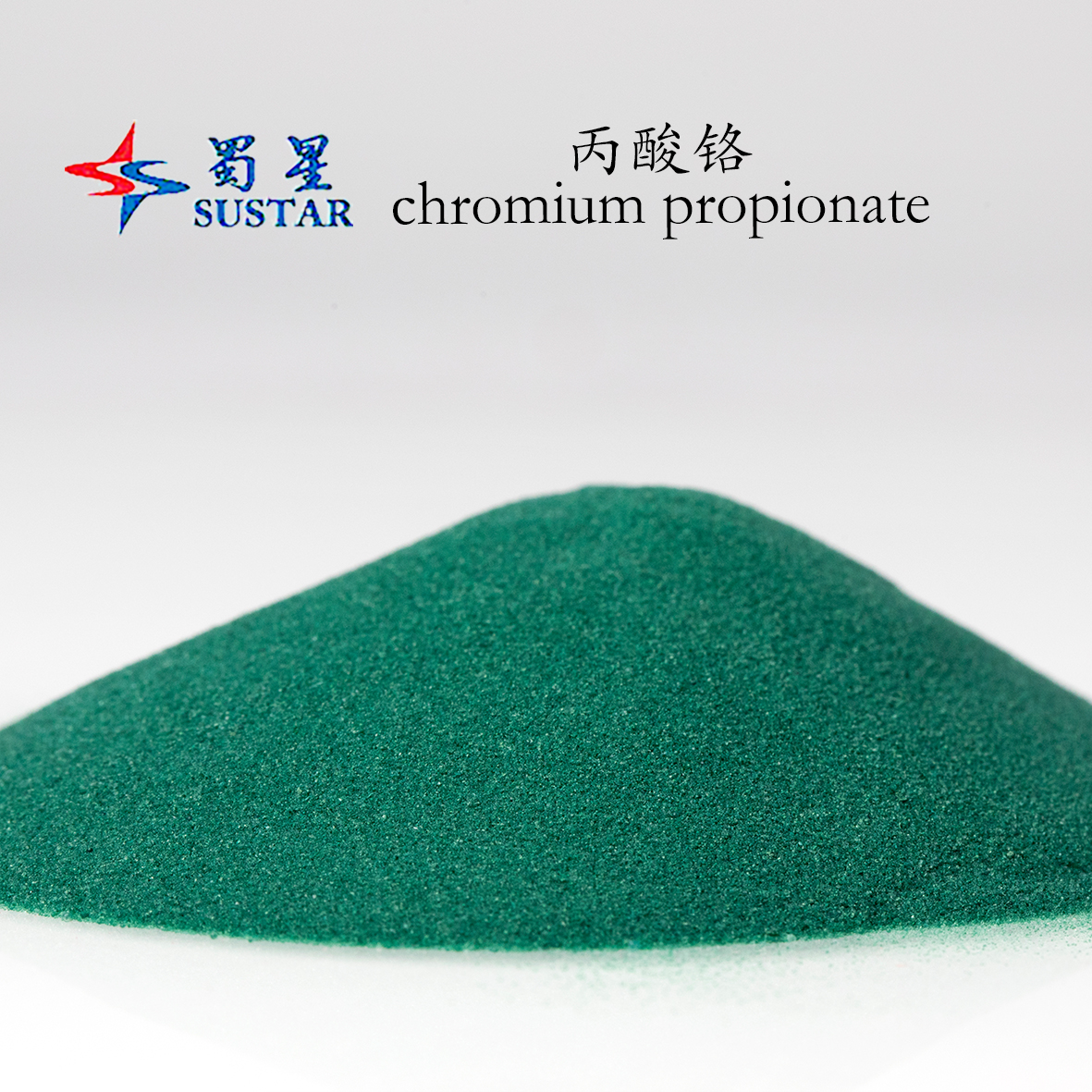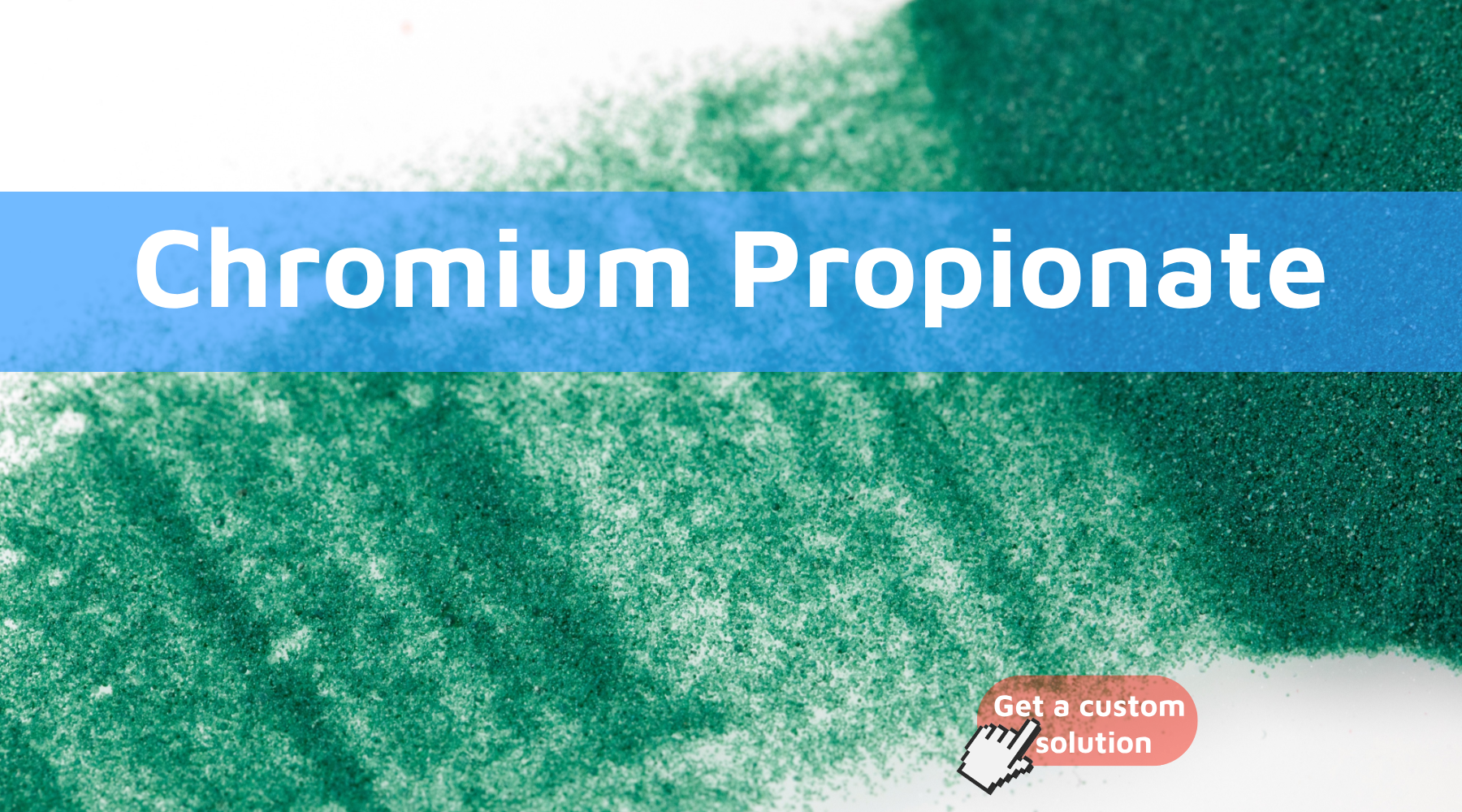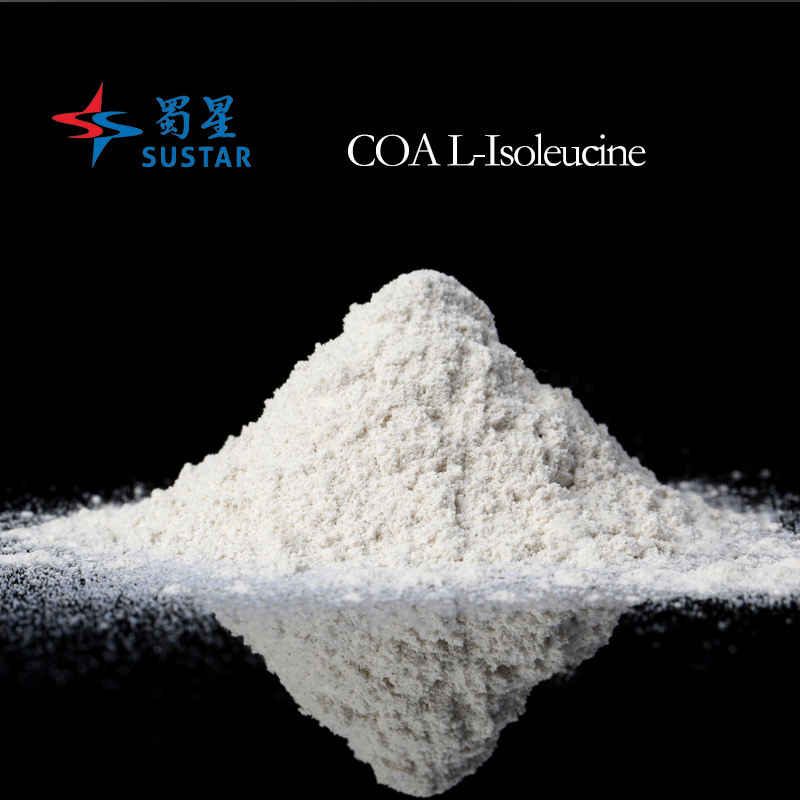Chromium propionate Cr 12% Greyish-green Powder Animal Feed Additive CAS 85561-43-9
As a leading enterprise in the production of animal trace elements in China, SUSTAR has received widespread recognition from customers both domestically and internationally for its high-quality products and efficient services. The chromium propionate produced by SUSTAR not only comes from superior raw materials but also undergoes more advanced production processes compared to other similar factories.
Product Efficacy
Chromium propionate, 0.04% Cr, 400mg/kg. Suitable for direct addition to pig and poultry feed. Applicable for complete feed factories and large-scale farms. Can be directly added to commercial feed.
- NO.1 Highly bioavailable
- It is organic source of chromium for use in swine, beef, dairy cattle and broilers.
- NO.2 Highly glucose utilization in animals
- It could potentiate the action of insulin and improve glucose utilization in animals.
- NO.3 Highly reproduction,growth/performance
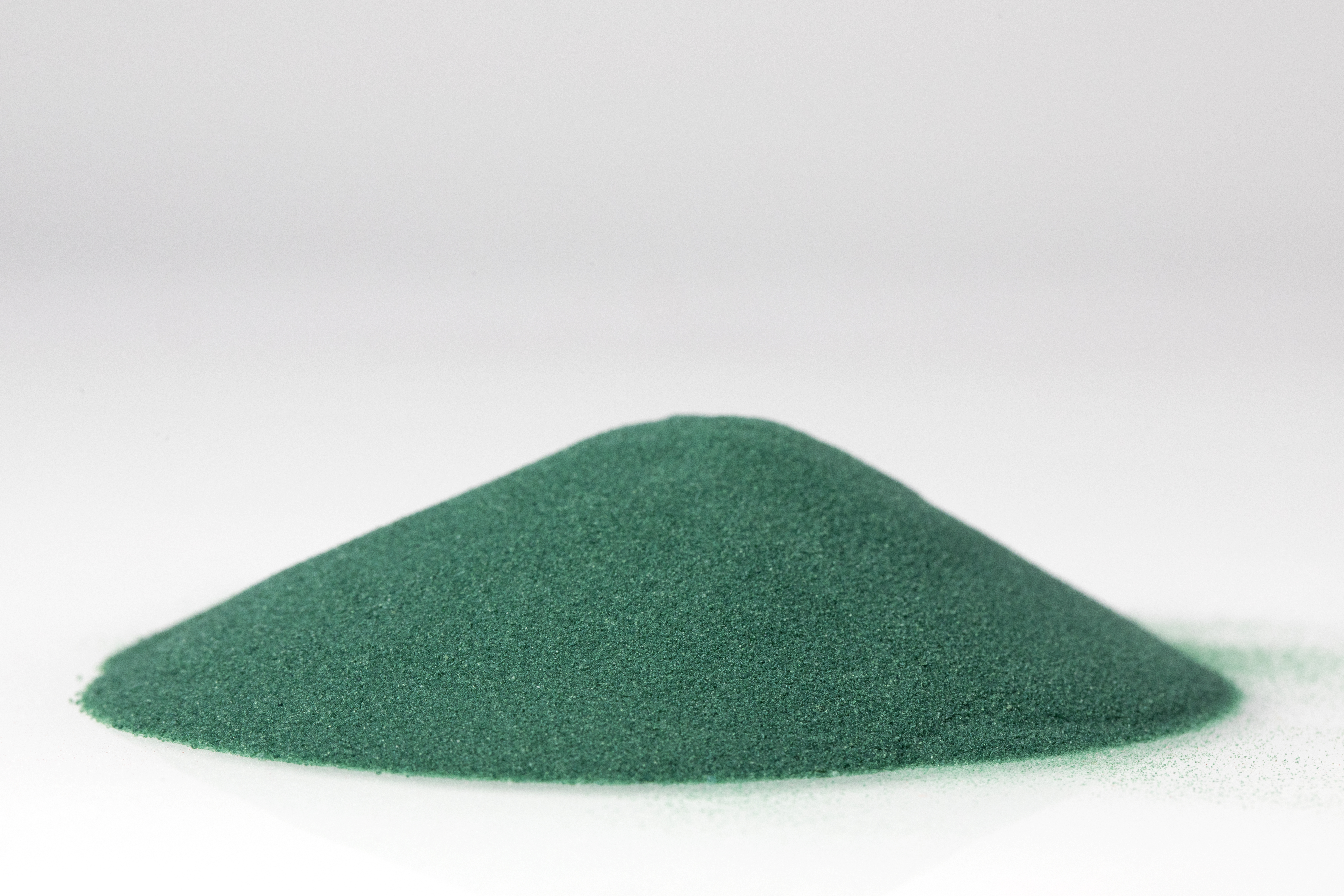
Indicator
Chemical name:Chromium Propionate
Cr 0.04% Physical and Chemical indicator:
|
Cr(CH3CH2COO)3 |
≥0.20% |
|
Cr3+ |
≥0.04% |
|
Propionic acid |
≥24.3% |
|
Arsenic |
≤5mg/kg |
|
Lead |
≤20mg/kg |
|
Hexavalent chromium(Cr6+) |
≤10 mg/kg |
|
Moisture |
≤5.0% |
|
Microorganism |
None |
Cr 6% Physical and Chemical indicator:
|
Cr(CH3CH2COO)3 |
≥31.0% |
|
Cr3+ |
≥6.0% |
|
Propionic acid |
≥25.0% |
|
Arsenic |
≤5mg/kg |
|
Lead |
≤10mg/kg |
|
Hexavalent chromium(Cr6+) |
≤10 mg/kg |
|
Moisture |
≤5.0% |
|
Microorganism |
None |
Cr 12% Physical and Chemical indicator:
|
Cr(CH3CH2COO)3 |
≥62.0% |
|
Cr3+ |
≥12.0% |
|
Arsenic |
≤5mg/kg |
|
Lead |
≤20mg/kg |
|
Hexavalent chromium(Cr6+) |
≤10 mg/kg |
|
Loss on drying |
≤15.0% |
|
Microorganism |
None |
The Best Choice for Heat Stress Management

At present, with the intensification of global climate change, the aggravation of heat stress in summer has become one of the great challenges facing the cattle industry. For animal husbandry, how to use advanced scientific knowledge and technology to cope with heat stress response, improve the production efficiency of pasture, and maximize productivity benefits.

During heat stress, animals undergo changes in hormone secretion, reduced nutrient intake, and increased maintenance requirements. Changes in intake and maintenance affect animal metabolism, resulting in decreased animal growth performance, production performance, and immunity

As a component of glucose tolerance factor, chromium can promote the binding of insulin to insulin receptors, enhance insulin function in animals, increase glucose uptake, play an important role in heat stress management, and can improve the growth, lactation and reproductive performance of ruminants.
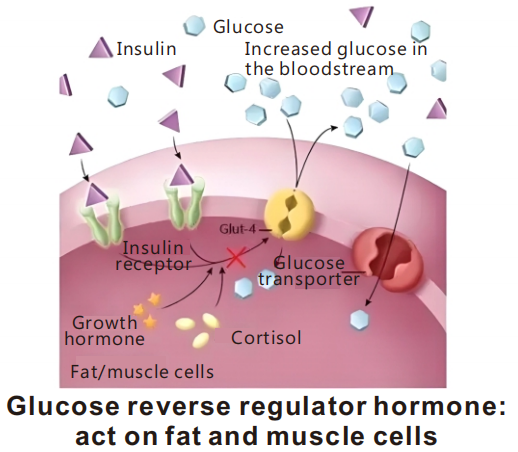
Chromium propionate can be used as a high-quality organic chromium source for supplemental chromium in dairy cows, and its absorption efficiency is higher than that of other types of organic chromium. The chromium propionate introduced by Shukxing Company can promote the growth and development of ruminants, significantly improve milk production, feed intake corrected milk production, reproductive performance and heat stress immunity of dairy cows, improve the tissue mobilization capacity of dairy cows at all stages of late pregnancy, and reduce mastitis.
Effect of chromium propionate on milk yield in heat-stressed Holstein cows
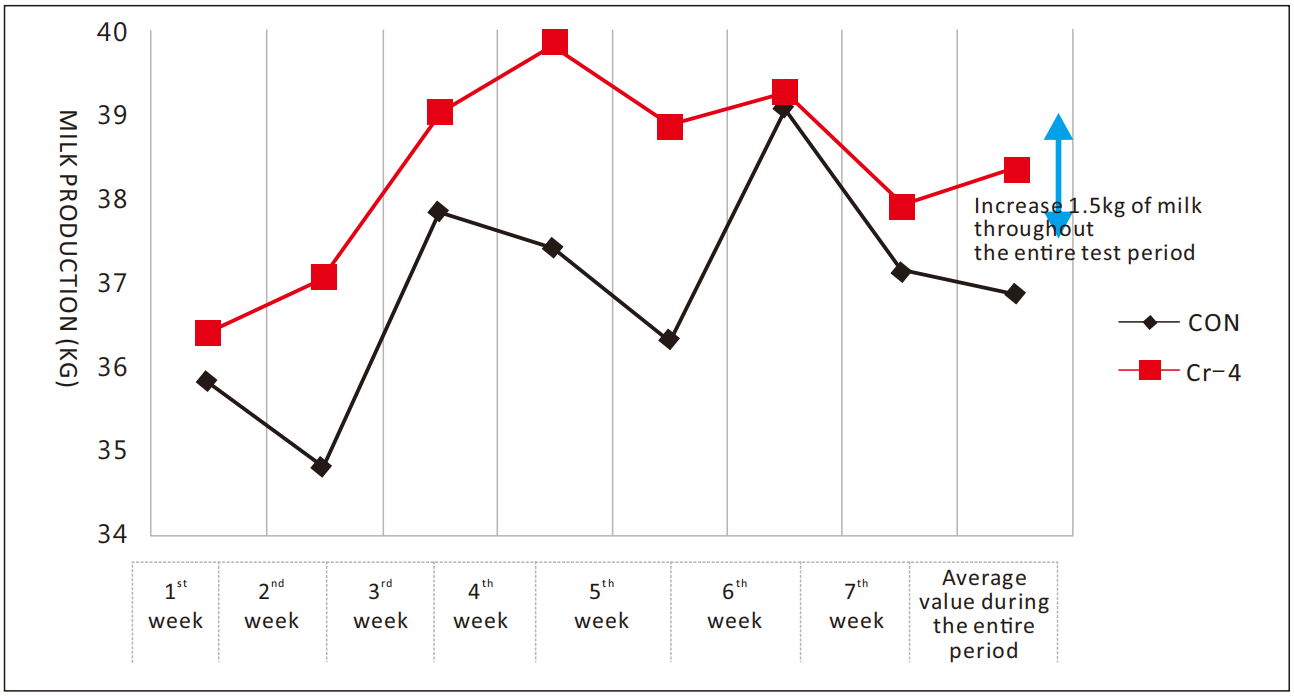
Effects of chromium propionate on reproductive performance of dairy cows during perinatal period in Jinggang city
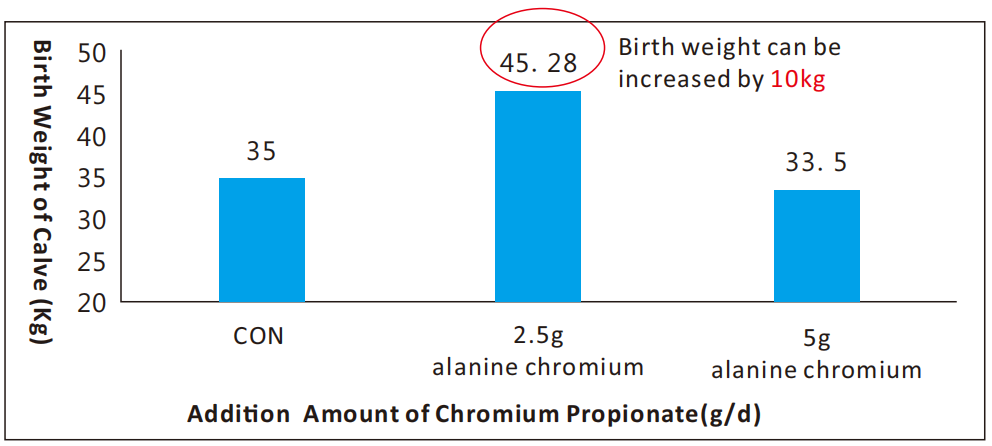
Effect of chromium propionate on mastitis in heat stressed dairy cows
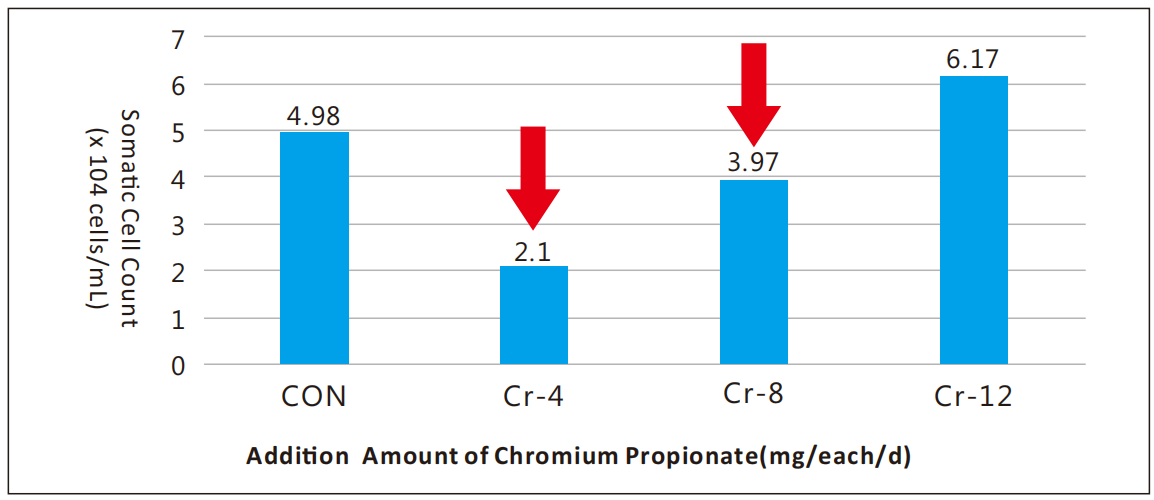
Effects of chromium propionate on microbial diversity in the rumen of dairy cows under heat stress
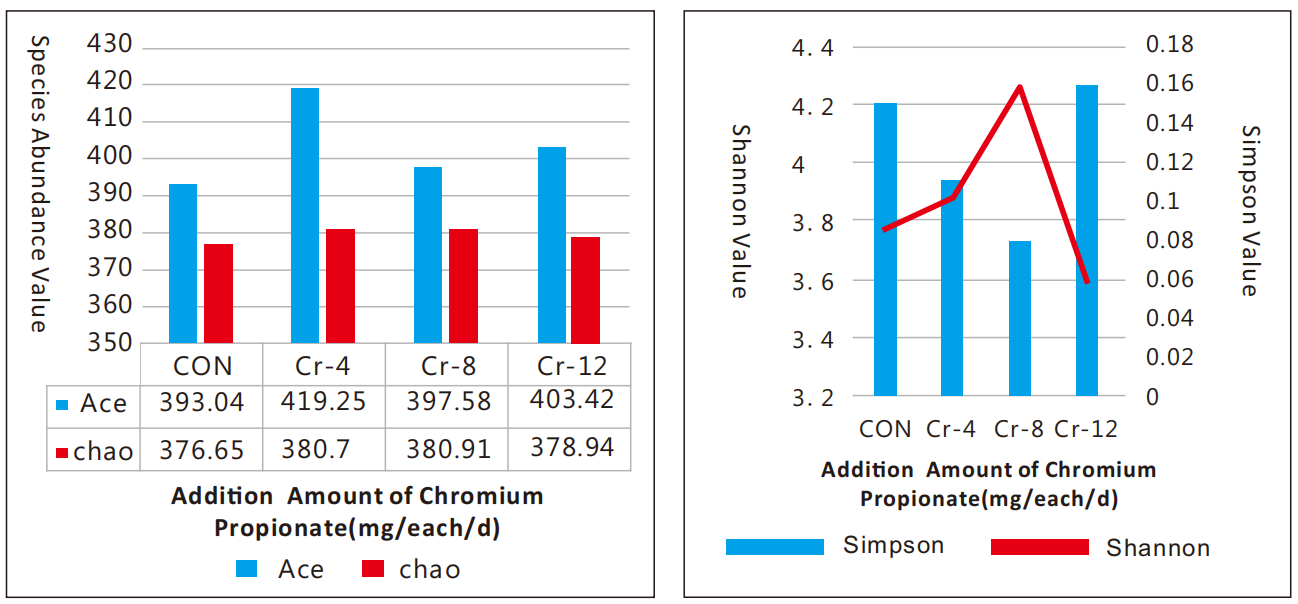
In order to obtain the best results, the feeding method of chromium propionate is recommended
(1) Feeding the cows with Cr propionate from 21 days before parturition to 35 days after parturition could increase feed intake and milk yield;
(2) feeding throughout lactation to increase milk yield;
(3) During heat stress, dairy cows had a higher demand for chromium, which could effectively alleviate the heat stress response;
(4) It can also be added with high-efficiency minerals such as alkaline copper chloride and alkaline zinc chloride to stimulate the maximum production potential of ruminants and improve production efficiency.
Note: In general, feeding cows with chromium propionate for 1-3 months is effective and should be used continuously.
Several studies have shown that the addition of chromium propionate to feed can alleviate heat stress and reduce the losses caused by heat stress to pasture.
| Items | Indicator | |||
| Type I | Type II | Type III | Type IV | |
| Appearance | Dark green flowing powder | |||
| Cr(CH3CH2COO)3 ≥ | 0.20% | 2.06% | 30.0% | 60.0% |
| Cr³+ ≥ | 0.04% | 0.4% | 6.0% | 12.0% |
| Propionic acid (C3H6O2), % ≥ | 24.3% | |||
| Cr6+ ≤ | 10mg/kg | |||
| Arsenic(As) ≤ | 5mg/kg | |||
| Lead(Pb) ≤ | 20mg/kg | |||
| Loss on drying ≤ | 5.0% | |||
| Parcle size | 0.45mm ≥90% | |||
| Chromium Propionate Content Specificaon | Pig Feed | Poultry Feed | Ruminant Animal Feed | Aquacic Animals |
| 0.04% | 250-500 | 250-500 | 750-1250 | 750-1250 |
| 0.4% | 25-50 | 25-50 | 75-125 | 75-125 |
| 6.0% | 1.5-3.3 | 1.5-3.3 | 5.0-8.3 | 5.0-8.3 |
| 12.0% | 0.75-1.5 | 0.75-1.5 | 2.5-4.2 | 2.5-4.2 |
Top Choice of International Grop
Sustar group has decades-long partnership with CP Group, Cargill, DSM, ADM,Deheus ,Nutreco,New Hope ,Haid,Tongwei and some other TOP 100 big feed company.

Our Superiority


A Reliable Partner
Research and development capabilities
Integrating the talents of the team to build Lanzhi Institute of Biology
In order to promote and influence the development of livestock industry at home and abroad, Xuzhou Animal Nutrition Institute , Tongshan District Government, Sichuan Agricultural University and Jiangsu Sustar, the four sides established Xuzhou Lianzhi Biotechnology Research Institute in December 2019.
Professor Yu Bing of Animal Nutrition Research Institute of Sichuan Agricultural University served as the dean, Professor Zheng Ping and Professor Tong Gaogao served as the deputy dean. Many professors of Animal Nutrition Research Institute of Sichuan Agricultural University helped the expert team to accelerate the transformation of scientific and technological achievements in the animal husbandry industry and promote the development of the industry.


As a member of the National Technical Committee for Standardization of Feed Industry and the winner of China Standard Innovation Contribution Award, Sustar has participated in drafting or revising 13 national or industrial product standards and 1 method standard since 1997.
Sustar has passed the ISO9001 and ISO22000 system certification FAMI-QS product certification, obtained 2 invention patents, 13 utility model patents, accepted 60 patents, and passed the "Standardization of intellectual property management system", and was recognized as a national-level new high-tech enterprise.

Our premixed feed production line and drying equipment are in the leading position in the industry. Sustar has high performance liquid chromatograph, atomic absorption spectrophotometer, ultraviolet and visible spectrophotometer, atomic fluorescence spectrophotometer and other major testing instruments, complete and advanced configuration.
We has more than 30 animal nutritionists, animal veterinarians, chemical analysts, equipment engineers and senior professionals in feed processing, research and development, laboratory testing, to provide customers with a full range of services from formula development, product production, inspection, testing, product program integration and application and so on.
Quality inspection
We provide test reports for each batch of our products, such as heavy metals and microbial residues. Each batch of dioxins and PCBS complies with EU standards. To ensure safety and compliance.
Assist customers to complete the regulatory compliance of feed additives in different countries, such as the registration and filing in the EU, USA, South America, Middle East and other markets.

Production Capacity

Main product production capacity
Copper sulfate-15,000 tons/year
TBCC -6,000 tons/year
TBZC -6,000 tons/year
Potassium chloride -7,000 tons/year
Glycine chelate series -7,000 tons/year
Small peptide chelate series-3,000 tons/year
Manganese sulfate -20,000 tons /year
Ferrous sulfate-20,000 tons/year
Zinc sulfate -20,000 tons/year
Premix (Vitamin/Minerals)-60,000 tons/year
More than 35 years history with five factory
Sustar group has five factories in China ,with annual capacity up to 200,000 tonns, covering totally 34,473 square meters,220 employees.And we’re an FAMI-QS/ISO/GMP certified company .
Customized Services

Customize Purity Level
Our company has a number of products have a wide variety of purity levels, especially to support our customers to do customized services, according to your needs. For example, our product DMPT is available in 98%, 80%, and 40% purity options; Chromium picolinate can be provided with Cr 2%-12%; and L-selenomethionine can be provided with Se 0.4%-5%.

Custom Packaging
According to your design requirements, you can customize the logo, size, shape, and pattern of the outer packaging
No one-size-fits-all formula? We tailor it for you!
We are well aware that there are differences in raw materials, farming patterns and management levels in different regions. Our technical service team can provide you with one to one formula customization service.


Success Case

Positive Review

Various Exhibitions we Attend




